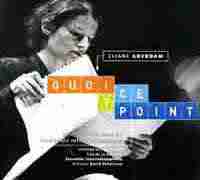
Six Dream Songs, Songs and poems of native Americans,
for oboe, clarinet and bassoon
Premiere in Boston (MA), April 30, 2005
Six Dreams Songs was inspired by the set of poems
Native American Songs and Poems, an Anthology, Edited by Brian Swann,
Dover Thrift Editions, 1997.
Dream songs formed the chief feature of the Dream dance cult and were given in sleep
by a dead friend or relative. The Land of the Dead is Above and the Milky way is the road
the spirits travel to their final resting place.
In the music, I tried to recreate the essence of the Wintu's poems.
The piece is divided into six short movements, and hopefully will convey an array of feelings evoked by the text.
Created by Daniel Aberdam. Thanks to Catherine Heyman for her help when building this site